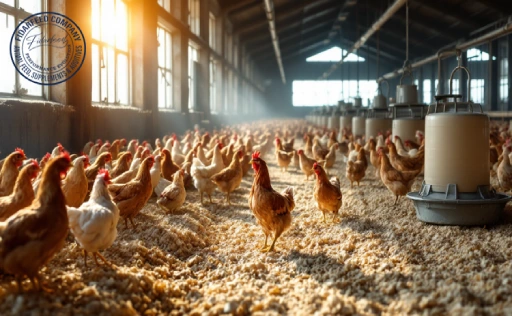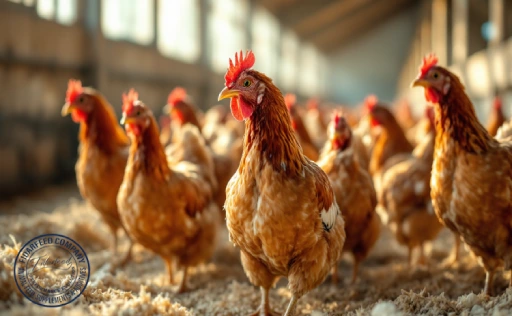
Salmonella Management in Poultry Farms is not just a technical issue—it’s a matter of health, safety, and long-term success for every poultry breeder. Whether you’re running a small backyard flock or a commercial operation with thousands of birds, the presence of Salmonella can turn your business upside down. This bacterium doesn’t only threaten the wellbeing of your birds—it puts your workers, your customers, and your reputation at risk. In this guide, we’ll walk you through practical, science-backed strategies to help you prevent, detect, and manage Salmonella infections on your farm. Ready to take control? Let’s get started.
What Is Salmonella and Why Should Poultry Breeders Care?
Salmonella is a group of bacteria that can infect both animals and humans. In poultry, it typically resides in the intestinal tract and can be spread through droppings, contaminated feed, water, and even dust particles. While some infected chickens may appear healthy, they can silently shed the bacteria, contaminating the environment and other birds.
For poultry breeders, the implications are serious. Infected flocks can lead to reduced growth, lower egg production, increased mortality, and even costly recalls if contaminated products reach the consumer. More importantly, certain Salmonella strains are zoonotic—meaning they can be transmitted to humans, often through undercooked eggs or meat.
Learn more about: Active Probiotic Yeast for Poultry
That’s why effective Salmonella management in poultry farms is not optional—it’s essential.
Understanding the Risks: How Salmonella Spreads in Poultry Farms
Salmonella doesn’t need much to thrive. It spreads quickly in warm, moist environments—exactly the kind of conditions found in most poultry houses. Transmission can occur through:
-
Direct contact with infected birds
-
Contaminated equipment, litter, or water
-
Rodents and insects that carry the bacteria from one location to another
Learn more about: Boost Your Poultry’s Growth with Sustainable, High-Quality Processed Meat Meal
- Farm workers’ boots and clothing, especially if proper hygiene isn’t practiced
Even newly hatched chicks can carry Salmonella if contamination occurs at the hatchery. Once introduced, it can persist in the environment for months, making control and prevention a real challenge if not addressed promptly.
Early Warning Signs: Detecting Salmonella in Chickens Before It Spreads
One of the challenges with Salmonella is that many infected birds show no symptoms at all. However, in some cases, signs may include:
-
Diarrhea or wet droppings
-
Lethargy and poor appetite
-
Sudden drop in egg production
Learn more about: How to Control Ammonia Levels in Poultry Houses Using Zeolite
- Unexplained deaths, especially in younger birds
Laboratory testing is the only reliable way to confirm infection. Swab tests, fecal cultures, and post-mortem examinations can help identify the presence of the bacteria before it spreads across the entire flock.
The Role of Biosecurity in Salmonella Management in Poultry Farms
Biosecurity is the first line of defense. It’s not just a set of rules—it’s a daily mindset. Effective biosecurity includes:
-
Limiting farm access to essential personnel only
-
Using footbaths and changing clothing/shoes before entering poultry houses
-
Implementing all-in, all-out flock management to avoid overlapping age groups
Learn more about: Meat and Bone Meal for Poultry: Affordable Alternative to Soybean Meal
- Controlling pests such as rodents, flies, and beetles that act as vectors
-
Regular equipment disinfection before and after use
Every biosecurity gap is an open door for Salmonella. Consistency is what makes these practices truly effective.
Best Practices for Cleaning, Disinfection, and Waste Management
A clean environment is a healthy environment. After each flock, perform a thorough cleaning and disinfection routine that includes:
-
Removing all manure and used litter
-
Washing equipment and surfaces with detergent and high-pressure water
Learn more about: Why Poultry Producers Trust Bentonite in Layer Feed
- Applying an effective disinfectant (approved for agricultural use)
-
Allowing time for drying and restocking
Waste must be handled carefully. Store manure and used litter away from clean areas, and never allow it to contaminate feed or water sources. Remember, good sanitation breaks the Salmonella cycle.
Nutrition and Gut Health: Supporting Chickens Against Salmonella Naturally
A well-fed bird is a resilient bird. Proper nutrition strengthens the immune system, making chickens less susceptible to infection. To support gut health:
-
Provide balanced diets rich in vitamins and minerals
-
Use probiotics or competitive exclusion products to promote beneficial gut bacteria
-
Avoid feed contamination by storing it in dry, clean areas and checking for mold or pests
A study published in Poultry Science showed that adding certain probiotics to broiler diets reduced Salmonella colonization in the gut by more than 40%. Gut health is not just a trend—it’s a tool.
Vaccination and Medication: What Role Do They Play in Salmonella Control?
Vaccination is an effective method to reduce the risk of infection, especially in large flocks or high-risk areas. Both live and inactivated vaccines are available and can be administered through drinking water, spray, or injection.
Learn more about: Boost Poultry Health: How Zeolite Cuts Ammonia and Cleans the Air
However, vaccination is not a silver bullet. It should be part of an integrated management plan. In case of an outbreak, your veterinarian may recommend antibiotic treatment, though resistance concerns make this a last resort in many regions.
Always consult an animal health expert before starting any medication program.
Human Health at Stake: Preventing Cross-Contamination and Zoonotic Risks
The risk doesn’t stop at the chicken coop. Humans can contract Salmonella by:
-
Handling contaminated birds or equipment
-
Consuming raw or undercooked poultry products
-
Failing to wash hands after working with animals
Learn more about: Why Choose Prepared Feed for Your Farm Animals: Livestock, Poultry, and Aquaculture
To minimize risk:
-
Train staff on personal hygiene and proper handling techniques
-
Ensure thorough cooking of all meat and eggs
-
Maintain clean food prep areas, especially in direct farm-to-table operations
Protecting your team and your customers builds trust and ensures long-term success.
Recordkeeping, Testing, and Monitoring: Building a Long-Term Salmonella Management Plan
Good data leads to good decisions. By keeping detailed records, breeders can track patterns, identify risk factors, and evaluate the effectiveness of their control measures. Key components include:
-
Routine environmental and fecal testing
-
Vaccination schedules
-
Cleaning and disinfection logs
Learn more about: The Benefits of Probiotics in Poultry: A Must-Know Guide
-
Mortality and health trend reports
Regular monitoring turns reaction into prevention. It’s the difference between a small problem and a costly crisis.
Final Thoughts: Creating a Safer, Healthier Poultry Farm Through Effective Salmonella Management
Salmonella management in poultry farms isn’t about reacting to outbreaks—it’s about preventing them. With a comprehensive strategy that includes biosecurity, sanitation, nutrition, vaccination, and careful monitoring, poultry breeders can protect their flocks, safeguard human health, and strengthen their operations.
Whether you’re just starting out or managing a complex commercial farm, staying proactive is the key. Invest in the health of your chickens today, and you’ll be rewarded with safer food, stronger flocks, and greater peace of mind tomorrow.







